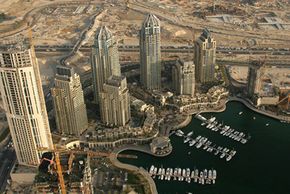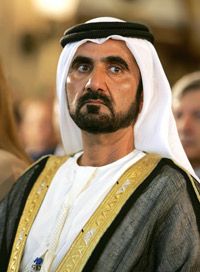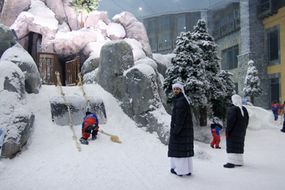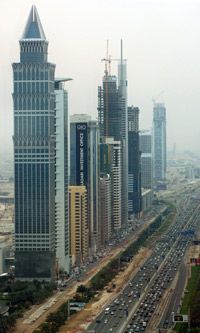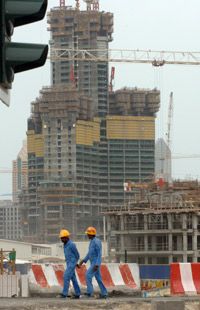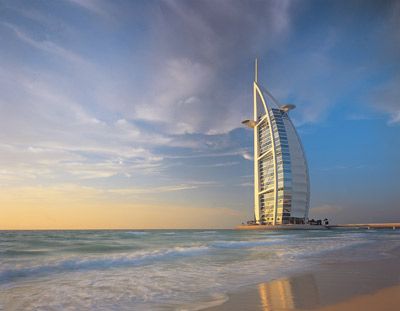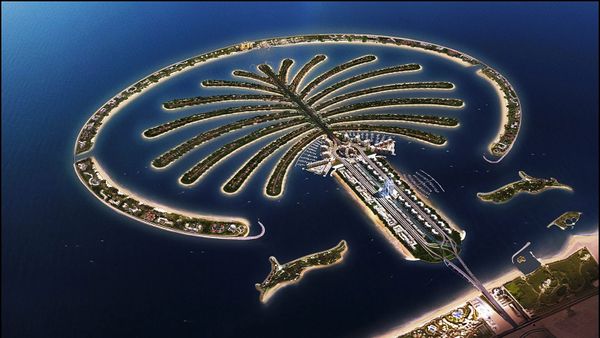An odd oasis of fantastical skyscrapers sits firmly planted in the desert. The city sprawls over the sand and even creeps out to sea -- man-made islands coated in luxury villas dot its coastline. Tourism, business and construction (confirmed by countless cranes) keep the city bustling through the night. Dubai, once an unassuming Bedouin outpost, has become an international curiosity for its unusual mixture of Middle Eastern conservatism and Western excess, its imagination and -- perhaps more than anything else -- its rapid growth.
No place flaunts capitalism like Dubai -- not even oil supplies, Dubai's royal family decided to establish the emirate as a financial center and an irresistible tourist destination. Since the early 1980s, the family has funded the city's boom, funneling money into construction, hosting mega-sporting events and establishing tax-free mini-cities like the Dubai International Financial Centre.
Advertisement
The strategy has worked. Today, oil accounts for very little of Dubai's revenue, yet the emirate's gross domestic product has exploded. Relatively relaxed laws and religious moderation have made Dubai palatable for expatriates attracted by business opportunities. The city has become a diverse, largely tolerant bastion in a region splintered by ethnic and religious conflict.
But Dubai also has an underside of smuggling rings, prostitution and money laundering. The U.S. Department of State lists the United Arab Emirates as a country "that should receive special scrutiny" for its human trafficking [source: U.S. Department of State]. Most conspicuously, the migrant workers who build the glittering city -- mostly illiterate and impoverished South Asians -- suffer dangerous conditions, low pay and sometimes even involuntary servitude.
In this article, we'll learn about the city that rose from the desert, where it's headed and what might be going wrong.
Advertisement
